In an era where personalization drives success, WordPress can take a cue from healthcare’s tailored approaches. By delivering bespoke user experiences, we can transform websites into engaging, meaningful journeys—just as patients deserve personalized care. Let’s innovate!
The Rise of Personalised User Experiences: What WordPress Can Learn from Healthcare
In an era where individuality reigns supreme, the demand for personalized experiences has transcended industries, reshaping how businesses engage with their audiences. Just as healthcare has evolved to embrace tailored treatments for patients, understanding the unique needs of users is becoming paramount in the digital landscape. For WordPress, a platform that powers nearly 40% of the web, the potential to revolutionize user experiences is vast. By adopting strategies from the healthcare sector—where personal attention and customized care lead to improved outcomes—WordPress can transform the way users interact with their websites. Imagine a world where visitors are not just statistics, but valued individuals whose preferences shape their online journeys. This article dives deep into the lessons WordPress can glean from healthcare, exploring the importance of personalization and how it can create more meaningful connections, enhance user satisfaction, and ultimately drive success in an increasingly competitive digital environment. Join us as we uncover the transformative power of personalized user experiences and ignite a new wave of innovation within the WordPress community.
The Evolution of User Expectations in the Digital Age
In an era where we are continuously bombarded with information, user expectations have evolved significantly. Today’s users demand tailored experiences that resonate with their unique needs and preferences. This shift mirrors trends in the healthcare sector, where personalized medicine has revolutionized patient care. Just as healthcare professionals now analyze genetic data to customize treatments, digital platforms, including WordPress, must adapt to deliver personalized content and experiences that feel relevant to each user.
Consider the following elements that have emerged as vital in enhancing user expectations:
- Data-Driven Insights: Utilizing analytics to understand user behavior can help create more relevant content.
- Segmentation: Users should be categorized into groups based on their interests and interactions, enabling more focused content delivery.
- User Feedback: Regularly soliciting and acting on user feedback fosters a sense of community and shows users their opinions matter.
- Accessibility: Designing for inclusivity ensures all users, regardless of their abilities, have seamless access to digital content.
WordPress has the potential to harness these insights by implementing features that allow for greater personalization. For example, incorporating dynamic content that adapts based on user interactions can significantly enhance user engagement. This could include personalized dashboards or content recommendations that learn from past behavior, much like tailored treatment plans in healthcare.
| User Expectation | WordPress Adaptation |
|---|---|
| Tailored Content | Dynamic post recommendations |
| Speed and Efficiency | Optimized loading times |
| Seamless Navigation | Intuitive site architecture |
| Engagement | Interactive elements like polls and quizzes |
Moreover, the importance of user experience (UX) cannot be overstated. In healthcare, the patient journey is crucial; similarly, the user journey on a digital platform should be smooth and intuitive. By prioritizing UX design principles, WordPress can minimize friction points and guide users through a seamless experience that feels curated just for them.
Lastly, embracing a culture of continuous improvement and innovation will position WordPress to meet and exceed user expectations as they evolve. Just as healthcare professionals continually update their knowledge and practices based on the latest research, WordPress developers and content creators should remain agile and responsive to user needs, integrating new technologies and methodologies to foster a more personalized user experience.
Understanding Personalisation: Lessons from Healthcare Innovations
The healthcare industry has been at the forefront of personalisation, leveraging data and technology to create tailored experiences for patients. This approach not only enhances patient satisfaction but also improves outcomes, suggesting that similar strategies can significantly benefit the digital landscape, particularly in platforms like WordPress. Understanding how healthcare innovates in personalisation offers key lessons that can transform user experiences on the web.
At the core of successful healthcare personalisation is the use of data analytics. By harnessing patient data, healthcare providers can develop treatment plans that cater to individual needs. For WordPress developers, implementing analytics tools can facilitate a deeper understanding of user behavior. This allows for the creation of customised user journeys, ensuring that content is not just relevant, but also engaging. Here are some vital components to consider:
- User Behavior Tracking: Utilize plugins that track visitor interactions to refine content delivery.
- Segmentation: Create user profiles based on interests and demographics for targeted content.
- Feedback Loops: Encourage user feedback to continuously improve site personalisation.
Another pivotal aspect of personalisation in healthcare is patient empowerment. Patients are now more involved in their health decisions, thanks to personalised insights and recommendations. Similarly, WordPress can empower users by providing them with customised dashboards and content recommendations based on their past interactions and preferences. This not only enhances user engagement but also fosters a sense of belonging within the community. Think about incorporating:
- Customised Content Feeds: Suggest posts and resources based on user interests.
- User-Centric Navigation: Design menus that adapt to user behavior for easier access.
- Dynamic Content Display: Show content relevant to specific user segments in real-time.
Moreover, the emphasis on holistic care in healthcare can inspire a more comprehensive approach to personalisation in WordPress. Instead of focusing solely on content, consider integrating various elements that cater to the user’s entire experience, such as:
| Element | Healthcare Example | WordPress Application |
|---|---|---|
| Support Services | 24/7 nurse hotlines | Live chat support for users |
| Wellness Tracking | Personal health records | User activity monitoring and progress tracking |
| Community Building | Support groups | User forums and discussion boards |
fostering a culture of innovation is essential. In healthcare, constant advancements are made to enhance personalisation through technology, and WordPress should embrace this mindset as well. Regularly updating themes and plugins, experimenting with new user interface designs, and adopting cutting-edge technologies like AI can lead to a more dynamic and responsive user experience. By staying ahead of trends and user expectations, WordPress sites can become leaders in personalisation, setting new standards for what users can expect from digital interactions.

Creating a User-Centric Design: The Heart of Personalised Experiences
To cultivate truly personalized experiences, it is essential to embrace a user-centric design philosophy. This approach focuses on understanding the unique needs, behaviors, and preferences of users, much like how healthcare professionals tailor treatments to individual patients. By prioritizing the user’s perspective, WordPress can create an environment where visitors feel valued and engaged.
Here are a few strategies to enhance user-centric design:
- Empathy Mapping: Develop a deep understanding of your users by creating empathy maps. This tool helps visualize user needs, pain points, and experiences, allowing designers to build solutions that resonate deeply.
- Feedback Loops: Implement systems for users to provide feedback easily. Regularly solicit user opinions through surveys or interactive forms to adapt your website to their evolving needs.
- Data-Driven Insights: Utilize analytics tools to track user behavior and preferences. Understanding what works and what doesn’t enables ongoing refinement of user experiences.
- Personalized Content Delivery: Leverage algorithms to deliver tailored content and recommendations based on user interactions. This can significantly enhance engagement and satisfaction.
Incorporating these strategies can lead to a transformative user experience. For instance, personalized dashboards that display relevant information, similar to how healthcare systems provide tailored health data, can significantly enhance user interaction with a WordPress site.
| User Need | WordPress Solution |
|---|---|
| Easy Navigation | Intuitive menus and breadcrumbs |
| Relevant Content | Customizable widgets for recent posts |
| Fast Load Times | Optimized images and caching plugins |
| Responsive Design | Mobile-friendly themes |
Ultimately, creating a user-centric design is about more than aesthetics; it’s about fostering a sense of belonging and connection. By aligning WordPress strategies with the personalized approach taken in healthcare, designers can cultivate environments that not only meet user needs but also anticipate them.
As businesses increasingly recognize the importance of personalization, WordPress must adopt these practices to remain competitive. By placing the user at the heart of design, we can create websites that don’t just serve information but actually engage and inspire users on their journeys.
Data-Driven Insights: Harnessing User Information Responsibly
In today’s digital landscape, the integration of data has transformed how businesses interact with users. Just as healthcare professionals leverage patient information to provide tailored treatments, WordPress can adopt similar strategies to create more personalized user experiences. By responsibly harnessing user information, we can enhance engagement and satisfaction, ultimately fostering a more loyal community.
Understanding User Behavior
The foundation of personalization lies in understanding user behavior. Analyzing data such as:
- Page views
- Time spent on site
- Click patterns
- User preferences and interests
can provide invaluable insights into what users truly want. With this knowledge, WordPress site owners can curate content that resonates with their audience, driving higher conversion rates and deeper connections.
Implementing Smart Recommendations
Just as healthcare providers use predictive analytics to anticipate patient needs, WordPress can implement smart recommendation systems. By utilizing algorithms that analyze user behavior and preferences, websites can suggest:
- Relevant blog posts
- Complementary products
- Tailored services based on user history
This not only enhances the user experience but also increases the likelihood of users returning for more, creating a cycle of engagement.
Privacy and Transparency
While collecting and analyzing data is essential, it is equally important to prioritize user privacy. Establishing transparent data practices is crucial. Websites should:
- Clearly communicate what data is collected
- Explain how it will be used
- Offer users control over their data preferences
By fostering trust, WordPress sites can cultivate a more engaged audience that feels valued and safe.
Building a Community Through Feedback
Data-driven insights can be enriched by actively soliciting user feedback. Creating channels for users to share their experiences and suggestions allows site owners to:
- Adjust content strategies
- Identify areas for improvement
- Enhance overall user satisfaction
Engaging users in this manner not only makes them feel heard but also strengthens community bonds, turning visitors into advocates.
Conclusion Table: Benefits of Personalized User Experiences
| Benefit | Description |
|---|---|
| Increased Engagement | Users are more likely to interact with content that feels relevant to them. |
| Higher Conversion Rates | Tailored recommendations can lead to more completed purchases or actions. |
| Stronger User Loyalty | When users feel understood, they are more likely to return and engage. |
| Enhanced User Satisfaction | Personalized experiences can lead to higher satisfaction and positive reviews. |
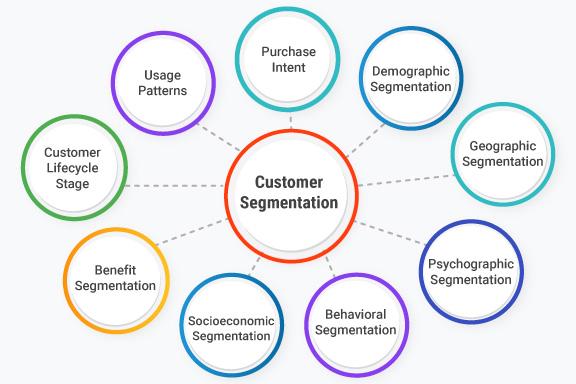
Segmentation Strategies: Tailoring Content to Diverse User Needs
In the digital landscape, understanding the diverse needs of users is paramount for any platform, especially in content management systems like WordPress. By adopting segmentation strategies, creators can deliver tailored content that resonates with various audience segments. This approach mirrors best practices seen in the healthcare sector, where personalized experiences can significantly impact patient outcomes and satisfaction.
Segmentation allows for the categorization of users based on demographics, behavioral patterns, and preferences. By analyzing these factors, WordPress site owners can create more engaging experiences. Here’s how to implement effective segmentation:
- Data Collection: Utilize tools like Google Analytics or WP Forms to gather insights on user behavior.
- User Surveys: Conduct surveys to understand the specific needs and challenges faced by different user groups.
- Content Performance Analysis: Regularly review analytics to see what content is resonating with various demographics.
Once you have segmented your audience, the next step is crafting content that speaks directly to each group. This could mean creating dedicated landing pages or tailored blog posts that address the unique interests of different segments. For instance, a healthcare-related site could have sections for patients, caregivers, and healthcare professionals, each with content that is relevant to their specific roles.
Moreover, personalized user experiences can be enhanced through dynamic content delivery. By implementing plugins that allow for content customization, WordPress sites can show different messages, images, or offers based on the user’s segment. This level of personalization can lead to higher engagement and conversion rates.
For a snapshot of how segmentation can be effectively implemented, consider the following table:
| User Segment | Content Type | Engagement Strategy |
|---|---|---|
| Patients | Informative Articles | Email Newsletters |
| Caregivers | Support Resources | Interactive Webinars |
| Healthcare Professionals | Research Updates | Networking Events |
Embracing segmentation strategies not only enhances user experience but also builds loyalty. When users feel understood and valued through relevant content, they are more likely to return and engage with your platform. This model, rooted in personalization, can transform a standard WordPress site into a hub of tailored experiences, much like the personalized care patients expect in healthcare settings.

Integrating AI and Machine Learning: The Future of Personalisation
As AI and machine learning technologies continue to evolve, they are set to redefine the landscape of personalisation in digital experiences, especially in the realm of WordPress. By harnessing these advanced technologies, WordPress can create more tailored experiences that respond not only to user preferences but also to their behaviors and needs. This shift will not only enhance user engagement but also foster a deeper connection between users and content.
Imagine a WordPress site that can:
- Analyze user interactions: By tracking user behavior on the site, machine learning algorithms can identify patterns and preferences, allowing for dynamic content adjustments.
- Provide real-time recommendations: Utilizing AI, WordPress can suggest articles, products, or services based on a user’s previous visits, effectively creating a personalised journey each time someone logs in.
- Adjust content presentation: With AI, the layout and structure of a webpage can be modified in real-time to suit the specific interests of individual users, ensuring a unique experience for every visitor.
Furthermore, the healthcare sector illustrates the profound impact of personalisation. Patient data is meticulously analysed to tailor treatment plans, leading to improved outcomes. WordPress can take a page from this playbook by implementing user profiles that adapt not only to demographic information but also to behavioral data. This means that the content you offer could evolve based on how users interact with your site over time.
To illustrate the potential of this integration, consider the following table showcasing features that can be seamlessly integrated into a WordPress site:
| Feature | Description | Benefit |
|---|---|---|
| Personalised Dashboards | Customisable panels that display content based on user interests. | Enhanced user engagement and satisfaction. |
| Predictive Analytics | Forecasting user needs through data patterns. | Proactive content delivery and improved user retention. |
| Adaptive Learning Tools | Tools that modify learning experiences based on user performance. | Increased user growth and skill enhancement. |
Ultimately, the integration of AI and machine learning into WordPress is not just about technological advancement; it’s about creating meaningful experiences. Just as healthcare providers leverage data to deliver personalised care, WordPress can empower content creators to deliver bespoke experiences that resonate on a personal level. The future is not just about serving content; it’s about serving the right content to the right user at the right time.
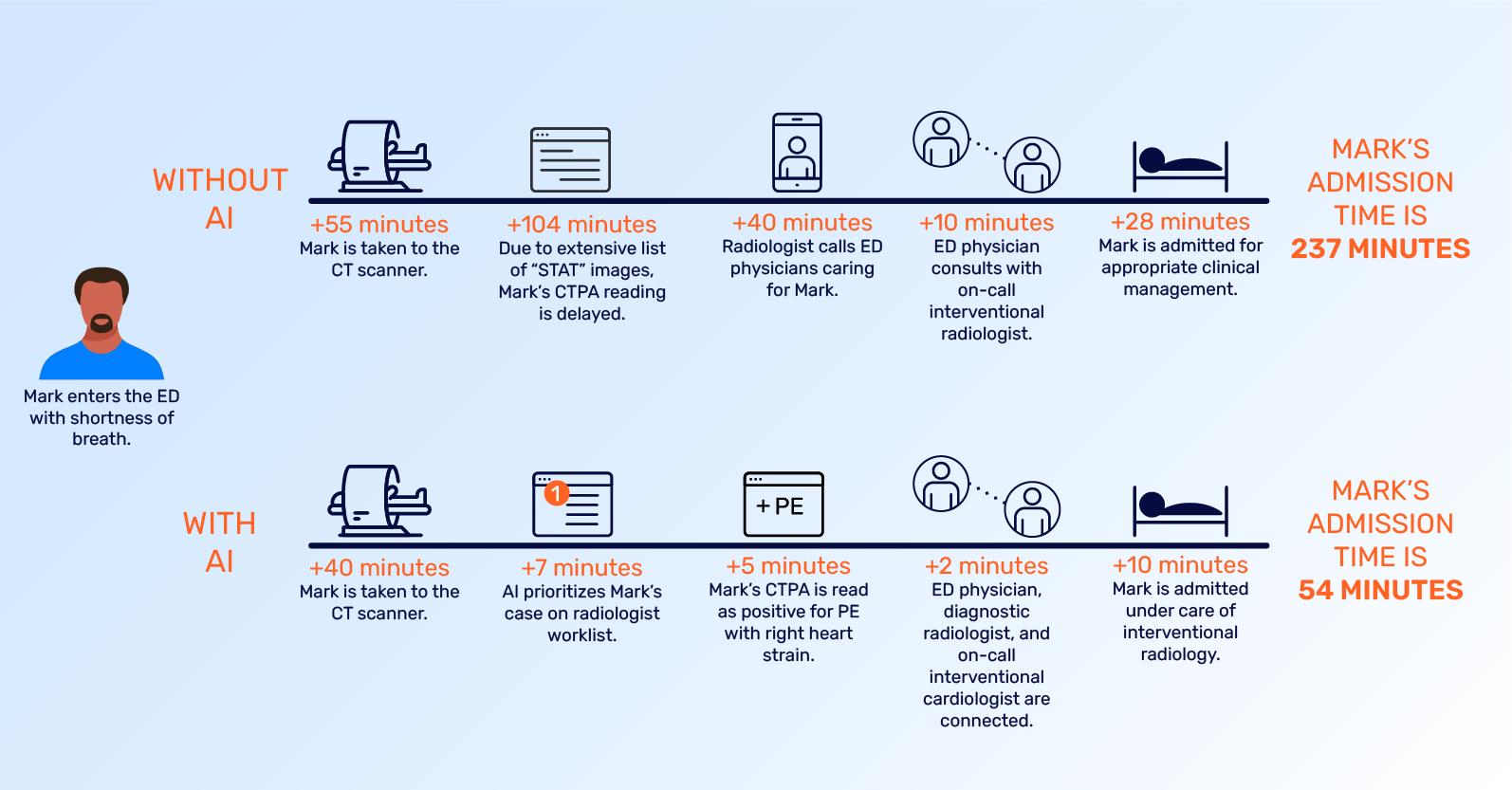
Optimising User Journeys: A Healthcare Approach to Engagement
In the ever-evolving landscape of digital engagement, healthcare provides a compelling model for creating personalised user experiences. By leveraging patient data and user feedback, healthcare professionals are able to tailor interactions that not only meet but anticipate the needs of individuals. This approach goes beyond mere service delivery; it fosters a deep sense of connection and trust between the user and provider, a principle that content creators and web designers in the WordPress community can adopt.
How can we apply these insights to optimise user journeys on WordPress? Here are some key strategies:
- Data-Driven Personalisation: Gather data insights to understand user preferences, habits, and pain points. This allows for the delivery of content that resonates on a personal level.
- Segmented User Profiles: Create specific user segments based on their interactions. Just as healthcare providers understand different patient demographics, WordPress sites can cater content uniquely to varying audience profiles.
- Interactive User Interfaces: Incorporate features such as quizzes or surveys that engage users actively. This not only makes the experience dynamic but also provides valuable data for further personalisation.
- Feedback Loops: Implement systems to regularly gather feedback. Regular updates based on user input ensure that the user experience continuously evolves, much like patient care is adjusted based on ongoing health assessments.
One of the most compelling aspects of the healthcare model is the emphasis on proactive engagement. Just as healthcare providers follow up with patients after check-ups, WordPress site owners should consider follow-up strategies to keep users engaged. This could include:
- Sending personalised emails based on user activity.
- Offering tailored content recommendations.
- Creating community spaces for users to interact and share experiences.
To illustrate how these tactics can be implemented, consider the following table that outlines potential user engagement strategies and their healthcare counterparts:
| User Engagement Strategy | Healthcare Counterpart |
|---|---|
| Personalised Content Recommendations | Customized Treatment Plans |
| Regular User Surveys | Patient Satisfaction Assessments |
| Interactive Community Forums | Support Groups |
| Follow-Up Emails | Post-Visit Check-Ins |
Embracing these principles not only enhances user satisfaction but also builds long-term loyalty. By creating a personalised journey, WordPress sites can foster an environment where users feel valued, understood, and connected. This transformation leads to a community that thrives on interaction, leading to a healthier digital ecosystem.

Building Trust through Transparency: The Key to User Loyalty
In an era where digital interactions dominate, the foundation of user loyalty lies firmly in the hands of transparency. Building an environment where users feel informed and valued can transform casual visitors into dedicated advocates for your brand. By adopting principles from the healthcare sector, WordPress can harness this transparency to create personalized user experiences that resonate deeply with site visitors.
Transparency in communication is critical. When users see clear, honest messaging regarding data usage, privacy policies, and product offerings, they develop trust. This trust is essential in fostering a lasting relationship. Consider the following strategies:
- Clear Privacy Policies: Ensure that your site’s privacy policies are straightforward and accessible. Users must know how their data is being used.
- Open Feedback Channels: Create platforms where users can voice their opinions. Actively responding to feedback not only shows that you value their input but also that you are willing to make adjustments based on their needs.
- Transparent Pricing: Avoid hidden fees and complex pricing models. Present your pricing in a way that’s easy to understand, allowing users to make informed choices.
Moreover, personalizing user experiences goes beyond just knowing a user’s name. It involves curating content that speaks to their needs and preferences, akin to the personalized care patients receive in healthcare settings. By analyzing user data responsibly, WordPress can offer tailored experiences that enhance engagement and satisfaction.
| User Preferences | Personalization Strategies |
|---|---|
| Content Interests | Provide customized content recommendations based on previous interactions. |
| Accessibility Needs | Implement features like font size adjustments and alternative text for images. |
| Purchase History | Suggest products based on past purchases to enhance the shopping experience. |
By embracing this model of transparency, WordPress can not only enhance user experiences but also instill a sense of community among its users. When individuals feel that they are part of a brand that values honesty and cater to their unique preferences, they are far more likely to remain loyal.
as WordPress evolves, integrating the healthcare industry’s approach to personalized care could be a game-changer. The more transparent and user-centric the platform becomes, the stronger the trust and loyalty that will follow. It’s time for WordPress to lead the way in cultivating lasting relationships through genuine transparency.
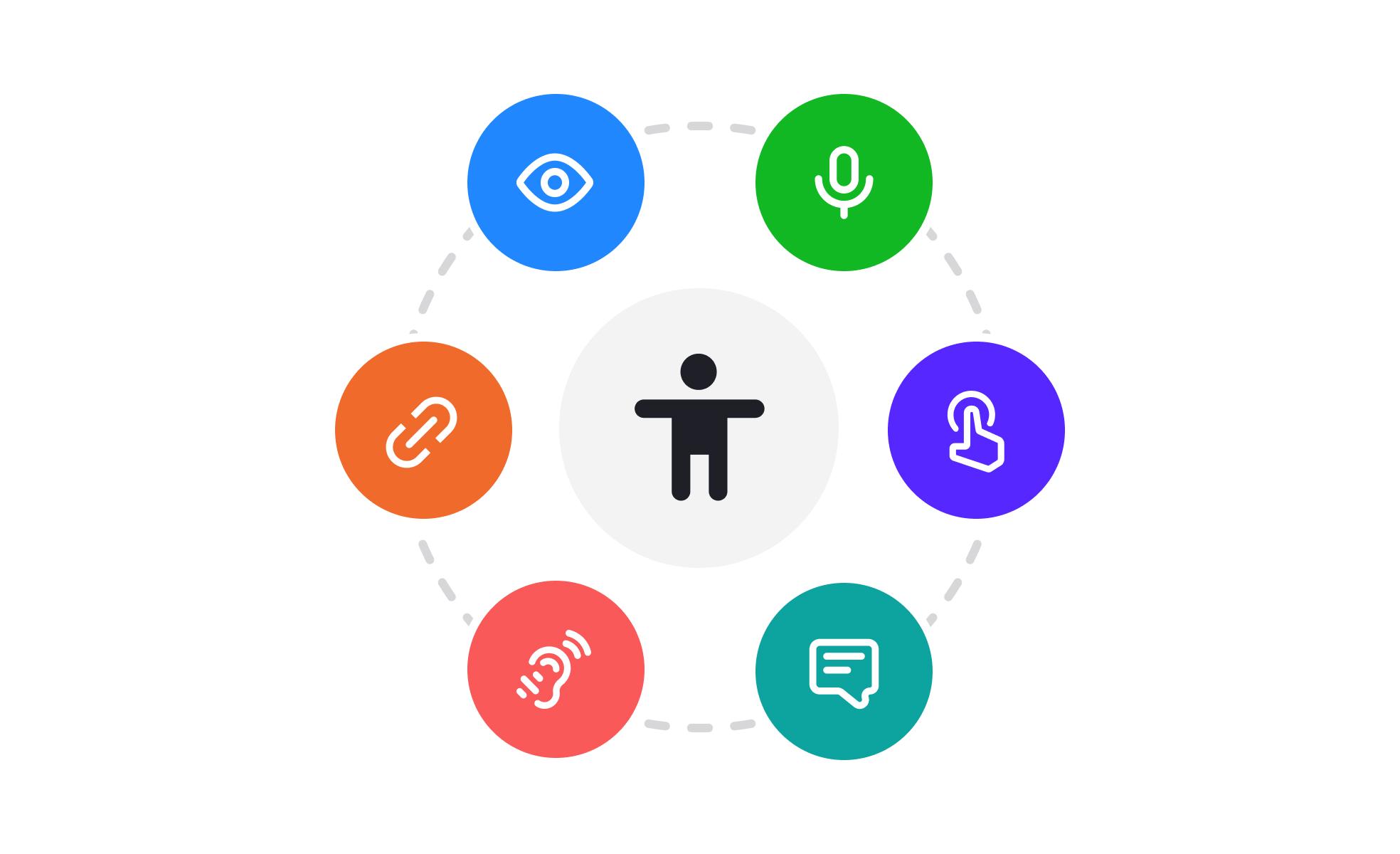
Enhancing Accessibility: Ensuring Everyone Feels Valued
In an increasingly digital world, creating a welcoming and inclusive online environment is not just a best practice but a necessity. Every visitor to a website deserves an experience that acknowledges their individuality and caters to their specific needs. By adopting strategies from healthcare’s personalized approach, WordPress can lead the charge in enhancing accessibility for all users.
To achieve this, consider implementing the following key strategies:
- Customizable User Interfaces: Allow users to tailor their experience by adjusting layouts, colors, and fonts. This empowers individuals with visual impairments or specific preferences to navigate with ease.
- Inclusive Content Design: Utilize clear, concise language and alternative text for images. This not only aids those with disabilities but also benefits all users by promoting better understanding.
- Adaptive Technologies: Integrate tools such as screen readers and voice recognition software. Ensure your WordPress site is compatible with these technologies to provide seamless navigation for all.
- User Feedback Mechanisms: Establish channels for users to share their experiences and suggestions. Regularly reviewing this feedback can guide iterative improvements that reflect the diverse needs of your audience.
A vital part of this strategy is to adopt a mindset that prioritizes empathy. Understanding that each user has unique challenges allows for the development of features that resonate deeply with them. A useful comparison can be drawn from healthcare: just as doctors tailor treatment plans to individual patients, web designers can create personalized user journeys that meet specific needs.
| Accessibility Feature | Benefit |
|---|---|
| Text-to-speech options | Supports visually impaired users in consuming content. |
| Keyboard navigation | Enables users with motor disabilities to navigate effectively. |
| Responsive design | Ensures usability across devices, enhancing user experience. |
| Color contrast adjustments | Aids users with color blindness in reading text and visuals. |
By embedding accessibility into the core of website design, WordPress can create an environment that not only meets compliance standards but also fosters a sense of belonging among all users. The goal is not merely to attract visitors but to cultivate a community where every individual feels valued, heard, and empowered to engage fully with the content.
Ultimately, the journey toward an accessible web experience is ongoing. As we draw inspiration from other fields, such as healthcare, we can continually innovate and enhance our approach. Each step taken to improve accessibility is a step toward a more inclusive digital landscape, where everyone has the opportunity to thrive.

Feedback Loops: Cultivating Continuous Improvement and Adaptation
In the journey toward offering personalized user experiences, feedback loops emerge as invaluable mechanisms for growth and refinement. Just as healthcare professionals tailor treatment plans based on patient feedback and health data, WordPress sites can harness user interactions and preferences to create unique, tailored experiences. By actively listening to user feedback, website owners can adapt their content and design, ensuring that every visitor feels valued and understood.
Key strategies to implement effective feedback loops include:
- User Surveys: Regularly solicit opinions through quick surveys post-interaction to gather insights on user experience.
- Heatmaps: Utilize tools that track user behavior on your site to identify which areas resonate most with your audience.
- Analytics Monitoring: Analyze site traffic and engagement metrics to understand user preferences and pain points.
Moreover, establishing a culture of continuous improvement requires a systematic approach. Consider creating a feedback dashboard where insights from various sources can be aggregated and analyzed. This can empower your team to make informed decisions about necessary changes or enhancements. Here’s a simple example of how to organize feedback data:
| User Feedback Source | Key Insight | Action Taken |
|---|---|---|
| Survey Results | Users want more video content | Launched a new video series |
| Analytics | High bounce rate on landing pages | Redesigned pages for better flow |
| Heatmap Data | Low engagement with sidebar ads | Removed ads and added related content |
Integrating these feedback loops creates an environment where ongoing adaptation is not just encouraged but expected. As users engage with your site, their insights become the foundation for future enhancements. This not only fosters a sense of community but also builds trust, as users see their feedback manifesting into tangible changes.
Ultimately, the goal is to create a virtuous cycle where user feedback drives innovation, leading to improved satisfaction and loyalty. By placing the user at the heart of your decision-making processes, you significantly increase the likelihood of meeting their evolving needs, thereby staying ahead in a competitive digital landscape.
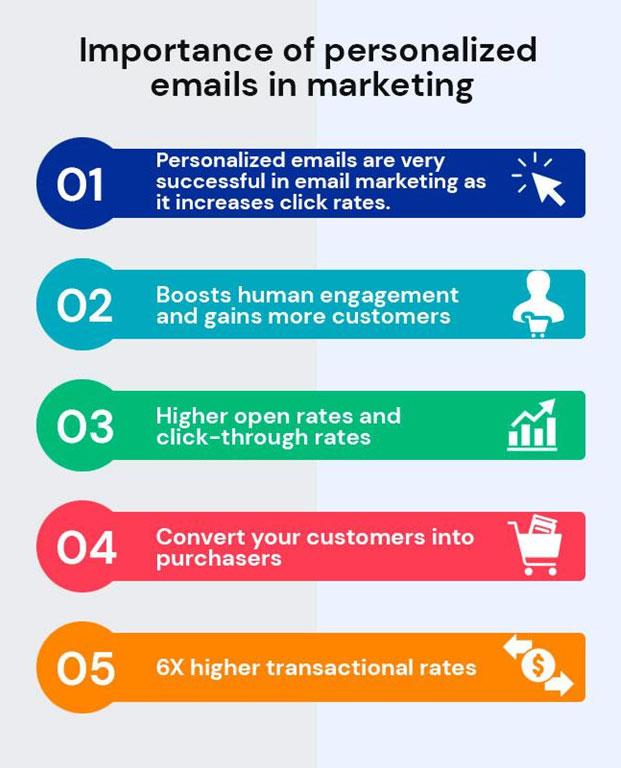
Personalised Content Strategies: Turning Visitors into Loyal Advocates
In a digital landscape brimming with options, capturing the attention of visitors is only the first step; the real challenge lies in transforming them into loyal advocates. To achieve this, websites must adopt personalized content strategies that resonate deeply with users, much like the tailored experiences found in the healthcare sector. By understanding individual needs and preferences, businesses can craft engaging narratives that speak directly to their audience.
Consider these approaches to personalize user experiences effectively:
- User Behavior Tracking: Leverage analytics tools to gain insights into visitor interactions. Understanding what content engages them can help tailor future offerings.
- Dynamic Content Delivery: Implement strategies such as A/B testing and adaptive content that changes based on user profiles, ensuring that every visitor encounters relevant information.
- Segmentation: Divide your audience into distinct groups based on demographics, interests, or behavior, allowing for targeted content that speaks directly to each segment’s unique needs.
Integrating personalized experiences into your WordPress site can significantly enhance user engagement. For instance, imagine a blog that offers customized articles based on previous visits or a storefront that suggests products based on past purchases. These techniques not only improve user satisfaction but also increase the likelihood of repeat visits.
| User Experience Element | Healthcare Analogy |
|---|---|
| Personalized Recommendations | Doctor’s tailored treatment plans |
| Automated Follow-ups | Post-appointment care instructions |
| User Feedback Incorporation | Patient satisfaction surveys |
Moreover, engaging with your audience through personalized emails, offers, or content highlights fosters a sense of belonging and loyalty. Initiatives like birthday discounts, personalized newsletters, or targeted campaigns create emotional connections that resonate far beyond mere transactions. By treating visitors as valued individuals, rather than just numbers, you cultivate a community of advocates who are more likely to share their positive experiences.
Ultimately, the key to turning one-time visitors into loyal advocates lies in the commitment to understanding their needs and aspirations. By employing these personalized content strategies, inspired by the best practices of the healthcare sector, your WordPress site can transform into a vibrant hub of engagement and advocacy, paving the way for sustained growth and success.
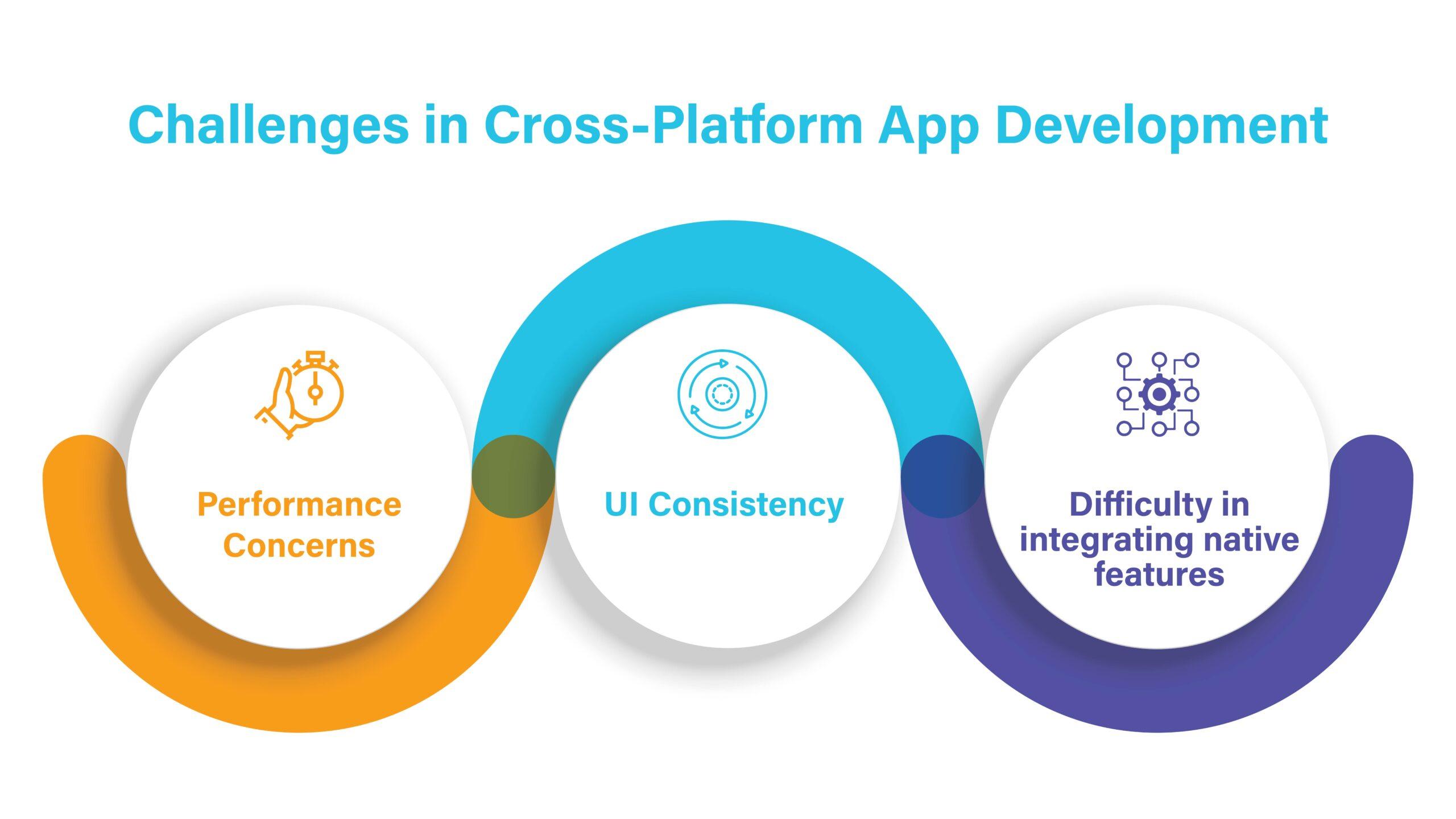
Cross-Platform Consistency: Providing Seamless User Experiences
In today’s digital landscape, maintaining consistency across various platforms is essential for creating an engaging user experience. Users expect to navigate with ease and familiarity, whether they are on a desktop, tablet, or mobile device. This seamless interaction fosters trust and loyalty, encouraging users to return again and again.
To achieve cross-platform consistency, consider the following strategies:
- Responsive Design: Ensure that your WordPress theme is fully responsive, adjusting seamlessly to different screen sizes. This approach not only enhances usability but also improves SEO rankings.
- Uniform Branding: Maintain consistent color schemes, typography, and branding elements across all platforms. Users should instantly recognize your brand, regardless of the device they are using.
- Streamlined Navigation: Simplify navigation menus and ensure they are accessible on every device. Users should be able to find what they need without frustration.
- Consistent Content: Make sure that your content is consistent in tone and style across platforms. This uniformity helps in reinforcing your brand’s voice and message.
Incorporating user-friendly features such as single sign-on and social media integration can also enhance the cross-platform experience. These features allow users to transition between platforms smoothly, reducing barriers to engagement.
To illustrate the importance of consistency, consider the following table highlighting the impact of a unified user experience on engagement metrics:
| Platform | Average Session Duration | Bounce Rate |
|---|---|---|
| Desktop | 5 minutes | 25% |
| Mobile | 3 minutes | 40% |
| Tablet | 4 minutes | 30% |
The data reveals that a consistent experience can lead to longer session durations and lower bounce rates across devices. By implementing a cohesive user experience, brands can significantly enhance user satisfaction and engagement.
Ultimately, aiming for cross-platform consistency is not just about aesthetics; it’s about creating a holistic experience that caters to individual user needs. As WordPress continues to evolve, adopting these principles can help users feel valued, understood, and connected—much like the personalized care they receive in healthcare settings.
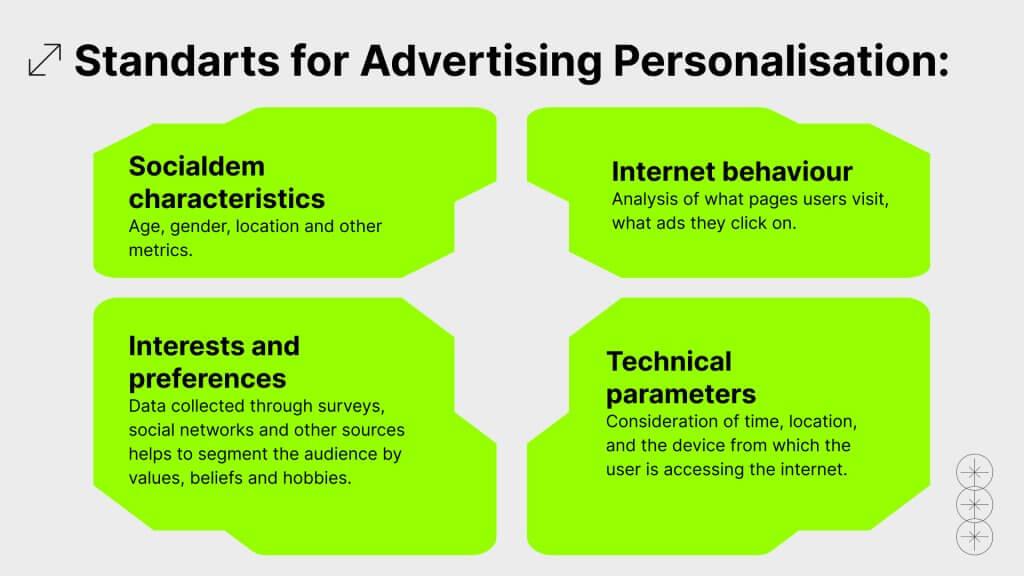
Measuring Success: Metrics that Matter in Personalisation
In the realm of personalisation, measuring success is paramount. Metrics must go beyond mere numbers; they should tell a story about user engagement and satisfaction. To truly understand the impact of personalised experiences, businesses must focus on a combination of quantitative and qualitative metrics that paint a comprehensive picture of user interaction.
- User Engagement: Track how users interact with personalised content. Metrics such as time spent on page, click-through rates, and social shares can indicate the effectiveness of tailored user experiences.
- Conversion Rates: The ultimate goal of personalisation is to convert visitors into loyal customers. Measure the percentage of users completing desired actions, whether it’s making a purchase, signing up for a newsletter, or filling out a contact form.
- User Retention: Assess how many users return after their initial visit. A successful personalised experience should foster loyalty and encourage repeat visits, reinforcing the relationship between the brand and the consumer.
- Customer Feedback: Direct feedback through surveys or comment sections can provide valuable insight into how users perceive their personalised experience. This qualitative data can be invaluable for continuous improvement.
To illustrate these metrics effectively, consider the following table that highlights key performance indicators (KPIs) and their relevance in assessing personalisation success:
| Metric | Description | Importance |
|---|---|---|
| User Engagement | Time spent engaging with personalised content. | Indicates the relevance and quality of content. |
| Conversion Rates | Percentage of users completing a targeted action. | Directly measures the effectiveness of personalisation. |
| User Retention | Frequency of return visits by users. | Reflects customer loyalty and satisfaction. |
| Customer Feedback | Qualitative insights from user interactions. | Guides future personalisation strategies. |
By integrating these metrics into your analytics framework, you can refine your personalisation strategies continuously. Not only will this help in understanding user preferences, but it will also provide a blueprint for improving the overall user experience. Just as healthcare providers adjust treatments based on patient feedback and outcomes, businesses can adapt their offerings based on real-time data and insights, creating a cycle of improvement that drives success.
Ultimately, the focus should be on creating a feedback loop where data informs decisions, and those decisions enhance the user journey. In the world of WordPress, leveraging these metrics will enable developers and marketers to craft experiences that resonate on a personal level, fostering deeper connections and driving growth.

Embracing Change: The Road Ahead for WordPress and User Experience
In an ever-evolving digital landscape, the need for personalized user experiences has never been more critical. As we observe the healthcare sector’s approach to individualized care, it becomes clear that WordPress can adopt similar strategies to enhance user engagement and satisfaction. By leveraging data analytics and user feedback, WordPress can create an environment where each visitor feels valued and understood.
To forge ahead, WordPress developers should consider incorporating the following strategies:
- Data-Driven Insights: Utilize analytics to understand user behavior and preferences, enabling tailored content delivery.
- Dynamic Content: Implement features that allow sites to adapt in real-time based on user interactions, keeping content relevant and engaging.
- User Profiles: Encourage users to create profiles that enhance personalization, delivering curated experiences that resonate with their needs.
- Feedback Loops: Foster communication channels that allow users to share their experiences, driving continuous improvement in site functionality and content.
Another area of inspiration from healthcare is the concept of personalized pathways. Just as patients navigate through treatment plans tailored to their unique conditions, WordPress can guide users through customized content journeys. This could involve:
| Personalization Strategy | Benefit |
|---|---|
| Customized Landing Pages | Increase relevance and engagement upon first visit. |
| Segmented Email Marketing | Deliver targeted content directly to users’ inboxes. |
| Adaptive UI Elements | Create a smoother user experience tailored to individual preferences. |
As WordPress continues to evolve, the integration of advanced technologies such as AI and machine learning can further enhance personalized experiences. Imagine a platform where plugins intelligently recommend content based on user behavior, or where chatbots provide real-time assistance tailored to individual inquiries. This level of personalization not only meets user expectations but also fosters loyalty and community.
embracing change within the WordPress ecosystem means prioritizing user experience as a cornerstone of development. By investing in personalization, we are not just improving functionality—we are laying the groundwork for a more inclusive, engaging, and user-centric web. This is the road ahead, and it is paved with the promise of understanding our users as more than mere visitors, but as valued individuals.
Frequently Asked Questions (FAQ)
Q&A on “The Rise of Personalised User Experiences: What WordPress Can Learn from Healthcare”
Q1: Why is personalisation in user experiences becoming increasingly important?
A1: Personalisation is the key to engaging users in a meaningful way. In today’s digital landscape, users crave experiences that resonate with their individual preferences and needs. Just as healthcare tailors treatment plans to individual patients, businesses—including those using WordPress—must adapt their digital offerings to meet the unique demands of their audience. By doing so, they increase user satisfaction, loyalty, and ultimately, conversion rates.
Q2: What can WordPress learn from the healthcare industry regarding personalisation?
A2: The healthcare industry excels in personalising care through detailed patient profiles and data analysis. WordPress can adopt similar strategies by utilizing advanced analytics to understand user behavior and preferences. This means leveraging data to create tailored content, recommendations, and functionalities that enhance the user journey. By incorporating elements like user profiles, adaptive content, and targeted messaging, WordPress can transform its platforms into more responsive and engaging environments.
Q3: Can you give examples of personalized experiences in healthcare that WordPress could emulate?
A3: Absolutely! In healthcare, patient portals offer tailored information based on individual health histories, preferences, and treatment plans. Similarly, WordPress can implement features like personalized dashboards for users, where they receive content and recommendations based on their previous interactions. Additionally, just as doctors remind patients of upcoming appointments, WordPress sites can send personalized notifications or reminders about relevant content updates, events, or products, enhancing user engagement and retention.
Q4: How does personalisation contribute to user trust and loyalty?
A4: Personalisation fosters a sense of understanding and connection. When users feel that their needs are recognized and met, trust builds, leading to stronger brand loyalty. In healthcare, trust is paramount; patients are more likely to engage with providers who understand their unique circumstances. WordPress can replicate this by showing users that their preferences matter. By delivering tailored experiences, users are more likely to return, recommend the site to others, and become advocates for the brand.
Q5: What are some practical steps WordPress users can take to begin personalising their sites?
A5: There are several actionable steps that WordPress users can take to enhance personalisation:
- Utilize plugins: Leverage plugins that offer personalisation features, such as user profile systems and behavior tracking.
- Segment your audience: Use analytics tools to segment users based on demographics, behavior, and preferences to tailor content accordingly.
- Dynamic content: Implement dynamic content that changes based on user interactions, ensuring that each visitor has a unique experience tailored to their journey.
- Feedback loops: Create opportunities for users to give feedback, allowing you to adjust your offerings and improve personalisation continuously.
By starting with these steps, WordPress users can lay the foundation for a more personalized experience that resonates deeply with their audience.
Q6: What is the ultimate vision for the future of personalisation in WordPress?
A6: The ultimate vision is a seamless, intuitive web experience where users feel known and valued. Imagine a WordPress site that not only responds to user behavior but anticipates needs based on past interactions. By harnessing the power of personalisation, WordPress can evolve from a basic content management system into a dynamic platform that empowers users, fosters community engagement, and drives success. This is not just a dream—it’s an achievable future that can redefine how we connect, engage, and grow in the digital age. Together, let’s embrace this transformation and lead the way towards a more personalized web.
Wrapping Up
as we stand on the brink of a new era in digital interaction, the lessons that WordPress can glean from the healthcare sector are more pertinent than ever. The rise of personalized user experiences is not just a trend; it represents a fundamental shift towards understanding and valuing individual needs. By embracing the principles of empathy and customization that have transformed patient care, WordPress can cultivate a more engaging and meaningful online environment for its users.
Imagine a future where every website is not just a platform but a personalized journey that resonates with its visitors. By leveraging data, enhancing user interfaces, and prioritizing user feedback, WordPress can lead the charge in creating websites that feel intuitive and tailored to each individual.
Let us be inspired by the healthcare industry’s commitment to personalization and apply those insights to the digital landscape. Together, we can redefine user experiences, making them more inclusive, engaging, and impactful. It’s time for WordPress to take bold steps forward, championing a revolution that prioritizes the user and fosters deeper connections. Embrace the challenge, and let’s transform the way we experience the web—one personalized interaction at a time. The future is bright, and it starts with us.





